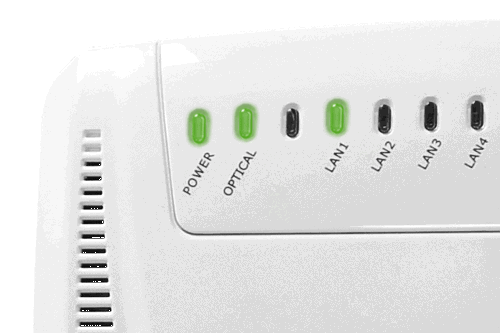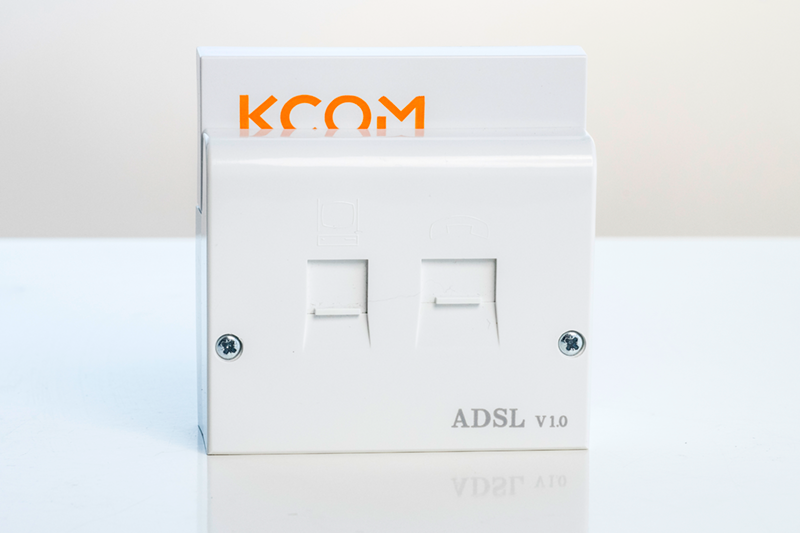Why do I keep getting disconnected?
Written by KCOM Business on 11/01/2023. Posted in Lightstream.
Answering a few questions about how you're connected and your current setup can help us diagnose the problem online.
We have a handy interactive troubleshooting tool that can help diagnose and fix the most common in-home broadband issues such as slow speeds and no connection. The tool also covers some of the basic troubleshooting questions that our call handlers would ask you over the phone. Please click here to give it a try: Broadband Troubleshooter
First, check here to see if we have any service issues. If there are no service issues currently, we have some steps below that may help to resolve the issue.
1. How are you connected to your router?
- If you're connecting wirelessly to your router, the disconnections you're experiencing are more than likely being caused by some sort of interference which is affecting your wireless signal.
For help with this, check out our helpful guide 'How do I get the best Wi-Fi signal?' that helps explain how Wi-Fi works and what you can do to improve your signal. - If your device is connected by an Ethernet cable, the disconnections you're experiencing are more than likely being caused because of a problem with your router's internet connection. As an Ethernet cable is a direct connection straight into the router, this can't be affected by interference.
2a. Lightstream customers
If you have Lightstream and you don't believe the issue is with your wireless, have a look at the lights on the ONT box on your wall (this is the box that your router plugs into).
- Power light should be solid green
- Optical light should be solid green
- LAN1 light should be green (flashing or solid)
If the power light or optical light on your ONT are off, flashing or red, this means the issue is our side. Please call us on 0800 915 5777, option 2 so we can look into this.

2b. ADSL broadband customers
Do you have regular ADSL broadband? If so, take a look at the lights on your router when you're disconnecting.
If the Broadband/DSL/WAN light is flashing or off, this means your router has lost its DSL connection and is trying to reconnect. There are a few things below that you can check to see if they're causing the issue with your connection.
Using telephone extension cables and adapters
Telephone extension cables are not suitable nor recommended for use with broadband as they can cause disconnections and slow speeds. The more cable or adapters that your broadband connection has to go through, the more issues you're likely to have.
If you're plugging your router into an extension cable or adapter and you're disconnecting, try plugging it directly into the main telephone socket with a microfilter and see if your connection improves. This is a quick way of figuring out whether your cable or adapters are causing an issue.
Unfiltered devices
Whenever you're plugging something into a telephone socket, you need to make sure this is plugged into a microfilter. Anything that's plugged directly into a phone socket such as a Phone, Sky TV box, Fax machine, etc is unfiltered meaning the signal will affect your broadband. Microfilters split the signals between your broadband and phone so they don't interfere with each other.
Filtered ADSL Socket
If you have a Filtered ADSL Socket, then you don't need to plug in a microfilter. The faceplate will have two sockets, one for the router (shown as a computer screen), and one for your phone.
If you have this phone socket, it's the only socket that your router can be plugged into. As it's already filtered, the broadband is terminated at this point - this means that you won't be able to get an ADSL signal if you plug into an extension socket.

Faulty microfilters
Faulty microfilters can cause disconnections as they allow some interfering frequencies to be picked up by your router. It's quite easy to spot a faulty microfilter as you may be able to hear noise on your phoneline when the router is switched on. If the noise disappears when the router is turned off, the microfilter is likely at fault.
If you think you have a faulty microfilter, you can prove this further by swapping it for another one. If the noise stops, the microfilter was at fault.
To get a new microfilter, you can purchase one from our MyTech shop.
3. Using the correct cables
Please only use the power cable that came with your router. If you use another power cable, this may not be up to specification and may not provide enough power for the router which would cause issues with your connection.
Using Ethernet cables you got elsewhere won't cause any issues - just make sure to use a CAT5e cable between your router and the ONT (Optical Network Terminal) if you have Lightstream.
4. Testing the line directly
There's a way to make sure devices or internal wiring in your property aren't causing an issue with your connection. You can check this by plugging your router into the NTE test socket for 24 hours and monitoring your connection. Check 'How do I test my broadband or phone in the NTE test socket? ' for the guide on how to do this.
5. Still having disconnections?
If you've checked all of the suggestions above and you're still having issues with disconnections, please visit our contact us page
Was this article useful?
